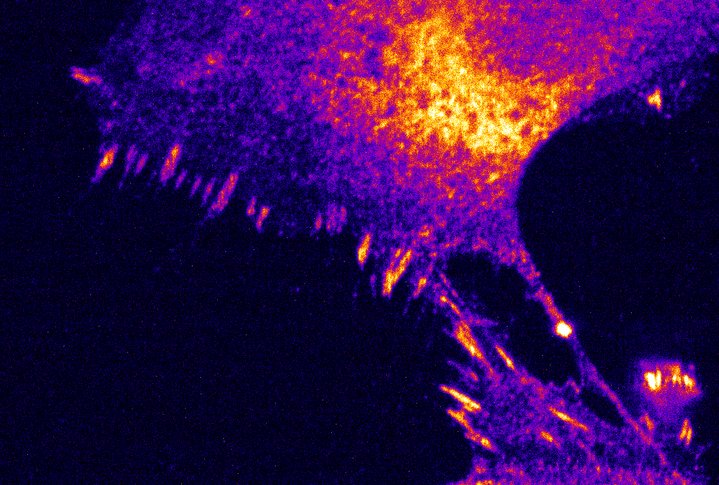In 2014, Eric Betzig, Stefan Hell and William Moerner got the Nobel Prize in Chemistry, for their work in developing super-resolution fluorescence microscopy. The three scientists developed different techniques for achieving super-resolution imaging. This includes stimulated emission depletion (STED) microscopy (developed by Hell), photo-activated localization microscopy (PALM, developed by Betzig) and single-molecule spectroscopy (developed by Moerner). But what does this mean and where does their theory stand in 2023? Let’s find out.
The beginning of super-resolution fluorescence microscopy
Until the end of the nineteenth century, fluorescence microscopy was, as Ernst Abbe (Abbe, 1873) and Lord Rayleigh (Rayleigh, 1896) defined it: “Diffraction limited”. It was impossible to distinguish between two objects that were laterally closer than about half of the used wavelength and even further apart in depth (around 500nm). Taking into account that the commonly used wavelengths are on the visible spectrum, lateral resolution could only resolve structures above 200nm (far blue) and 350nm (far red).
In the 1990s and early 2000s, new approaches to surpass Abbe’s limit started appearing. A timeline of these inventions can be found right here. In those first years, Eric Betzig contributed with his research in near-field scanning optical microscopy (NSOM), which can be found in this study. But the NSOM approach had limited applicability in the field of biology.
Early far-field advances started appearing in this period as well. Lateral resolution improvements started with Confocal microscopy, improving sectioning through light rejection. It was followed by the theoretical foundations of stimulated emission depletion (STED), single-molecule localization microscopy (SMLM) and structured illumination microscopy (SIM). The inferior axial (z) resolution in epifluorescence microscopy was initially addressed by using opposing objectives in confocal (4Pi) and widefield microscopy (I5 M).
The impact of super-resolution fluorescence microscopy techniques in biology
At the same time, the theoretical foundations of super-resolution microscopy (SRM) got a push in advances on fluorophores, lasers, computers and detectors technology. This helped the field to move forward. New techniques were perfected and became the pillars of super-resolution. These include: STED, SIM, PALM, and dSTORM.
These techniques continued to be developed and improved upon, with new methods such as DNA-PAINT and super-resolution fluorescence lifetime imaging microscopy (FLIM-SR) emerging in recent years. Additionally, the use of machine learning and image processing techniques, such as deep learning, may be used to improve the accuracy and efficiency of super-resolution microscopy. These techniques have revolutionized the field of microscopy and have led to many new discoveries in areas like cell biology and neuroscience.
The future of Super-resolution microscopy
There are several potential ways to improve super-resolution microscopy in the future. Long term super-resolution live cell imaging can be greatly improved upon. One of the major drawbacks used to be the intensity of the laser power, which needed to excite the sample to be high enough to cause phototoxicity. This used to hamper long term live imaging, but that’s luckily no longer the case.
The speed of SRM can also be a venue to explore. Nowadays, technology commonly needs long processing times and sample preparation. Finally, the integration of super-resolution microscopy with other imaging modalities, such as electron microscopy, may allow for even more detailed and accurate imaging of biological samples.
What Confocal.nl technologies can offer
Confocal.nl solutions focus on providing the highest resolution possible in a setting that allows long term live cell imaging. To do this, we use a combination of low laser power (nanoWatts at the sample plane) together with an increase in the signal to noise ratio (SNR) of four times higher compared to conventional confocal systems.
Our RCM technology can convert your existing widefield fluorescence microscope into a super resolution confocal system, with high sensitivity.
To get more information about our RCM products, you can download our brochure to explore how we improve your imaging experience.


